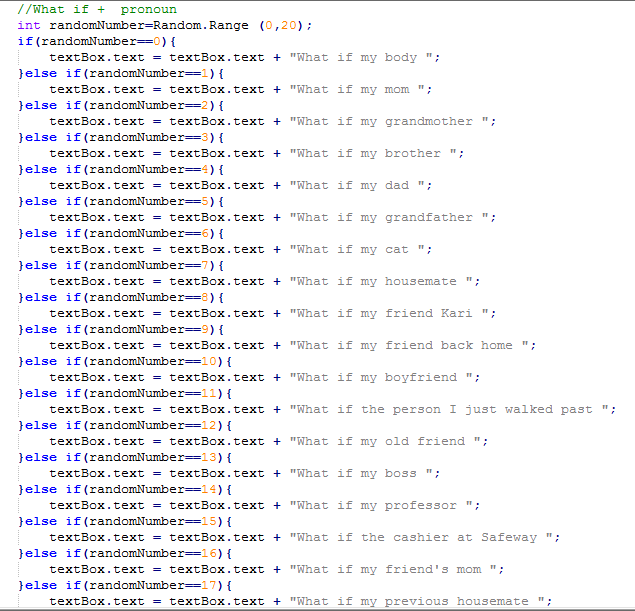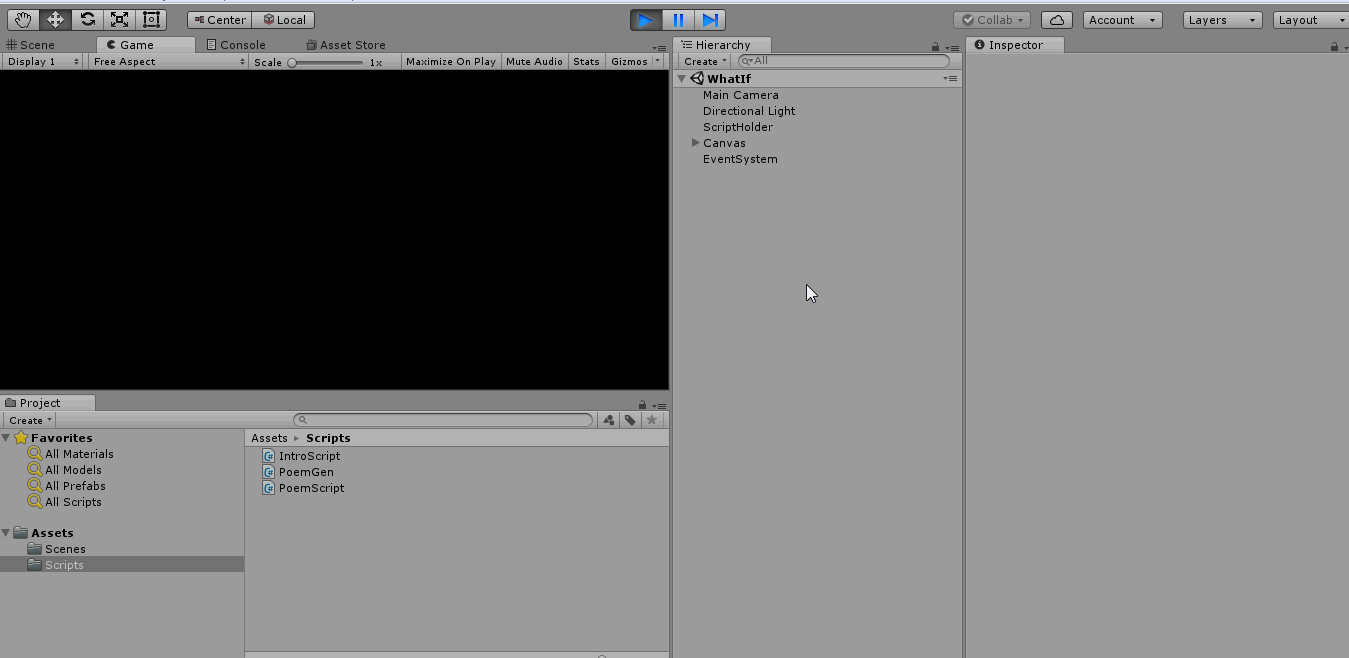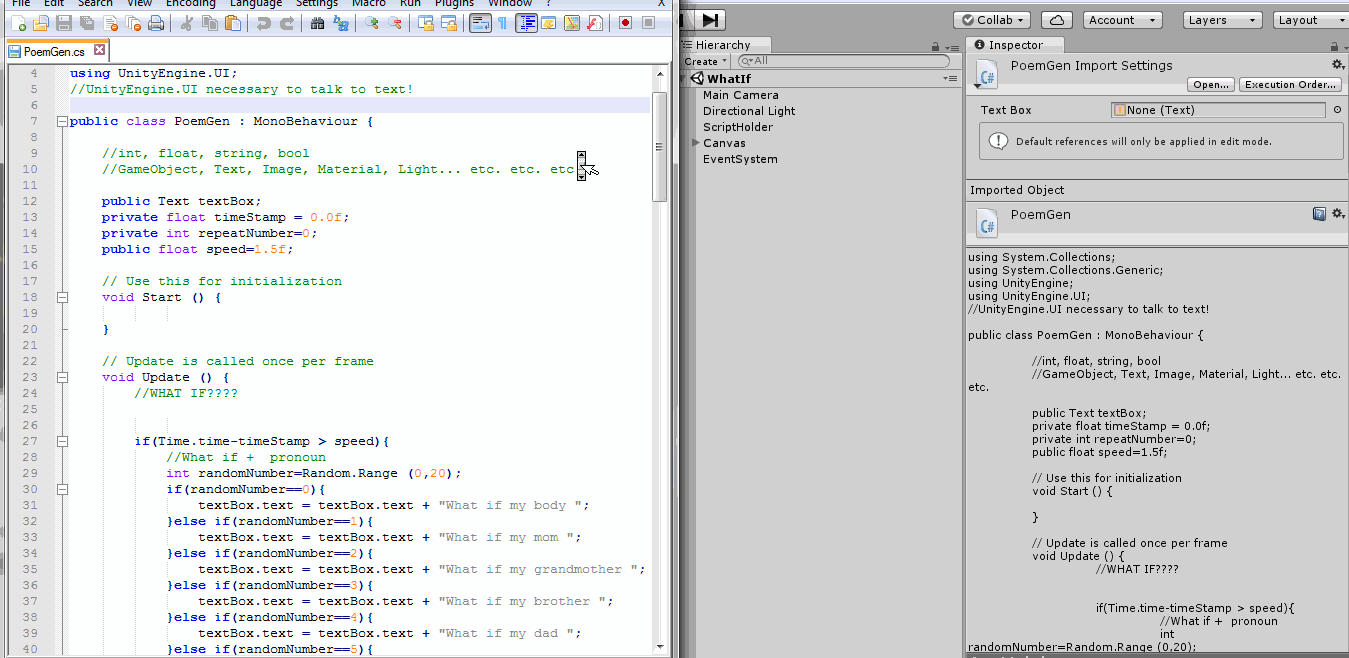Obsessions are unwanted, intrusive thoughts, images or urges that trigger intensely distressing feelings. Compulsions are behaviors an individual engages in to attempt to get rid of the obsessions and/or decrease his or her distress.
The above is a quote from this page from the International OCD Foundation’s website.


I had a number of ideas of how this week’s project might go. Two of them were about OCD, and one was about being a woman in the workplace/classroom. I think many forms of digital media have great potential for conveying elements of mental illness that may be difficult to explain verbally. However, unfortunately, most media representations of the disorder treat it either as a personality quirk (neatness, tidiness, timeliness), or as a punchline (see: Monk). For an example of the first treatment, see pretty much any TV show, or movie, or book. I’m sure you’ll hear someone who likes highlighting their neat and tidy schedule say they’re “so OCD” at some point. Using “OCD” to describe someone who’s organized is a part of the cultural vocabulary at this point. It’s rarely used maliciously in that context, but the effect is still harmful in that it perpetuates the deep misunderstanding of a serious mental illness, within a culture that already so frequently dismisses mental health.


Below is another quote from the IOCDF.
Most people have obsessive thoughts and/or compulsive behaviors at some point in their lives, but that does not mean that we all have “some OCD.” In order for a diagnosis of obsessive compulsive disorder to be made, this cycle of obsessions and compulsions becomes so extreme that it consumes a lot of time and gets in the way of important activities that the person values.
My game is not a whole and complete representation of OCD. It is, however, a representation of one way in which it might manifest. I hoped to show how certain manifestations of the disorder can be overwhelming, can feel unending, and I used small type, starting in the top corner of the window (to allow for as many “what ifs” as possible to be shown at a time), and increasing speed (to create a sense of urgency, and to show more and more and more – never-ending – “what ifs”) to work towards this goal.

A few elements of the phrasing I chose were meant to reflect certain things about OCD. For example, some of the potential scenarios may seem ridiculous, even laughable. They are! To someone without OCD. However, to someone with OCD, they are very real possibilities, and they are possibilities that their disorder is essentially forcing them to think about without pause. Phrases like “and it’s all my fault” or “and I could have stopped it” were included at the end of the “what ifs” because one way the disorder can manifest is hyper-responsibility, making the person with the illness feel responsible for things they do not reasonably have any control over.
This game was, as might be clear, very personal to me. It is likely impossible to convey the experience of mental illness with perfect accuracy, because everyone experiences every situation differently, but it can be rewarding to approach an estimation of even a small part of an impactful/highly personal experience.
